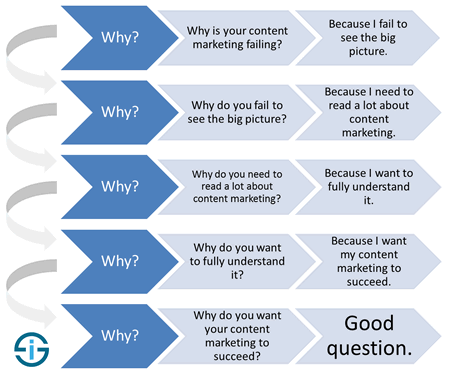 Allow me to kick in an open door: content marketing remains a hot topic. There isn’t a single marketing function where content marketing is not the talk of the day. Let me make it worse: we have to look at content beyond marketing too as I mentioned several times. The importance of easy content flows and access for customer service reps, for instance, is crucial and content has always been important in virtually all business functions.
Allow me to kick in an open door: content marketing remains a hot topic. There isn’t a single marketing function where content marketing is not the talk of the day. Let me make it worse: we have to look at content beyond marketing too as I mentioned several times. The importance of easy content flows and access for customer service reps, for instance, is crucial and content has always been important in virtually all business functions.
Content marketing is everywhere. As marketers, we tend to lose ourselves in definitions and debates on what it is and what it isn’t. I did so myself.
Furthermore, we talk about content marketing the whole time. I often wonder who reads all the content marketing content out there? Us, the marketers using content for marketing? Sure, there are marketers and managers from all over the world looking to understand what content marketing is. Some are using it intensively and want to talk about an integrated strategy.
For those who still learn I’m more than happy to write about the basics, we all have to start somewhere. But, at the end of the day, and not taking the occasional exception into account, we don’t need to sell content marketing (unless you’re the Content Marketing Institute or any other company, organization or individual organizing content marketing events – I did too – or writing books about content marketing or teaching people how to use content in a smart and relevant way or selling “certifications” or….).
Steer away from narrow content marketing perspectives
We need to sell good marketing. And the good news? We don’t need to sell it because everyone in the business and beyond wants it. Look at your customers and “stakeholders”. Think about goals: g-o-a-l-s. Know the WHY before the HOW.
Empower sales teams, get good qualified leads, improve customer experiences and the end-to-end customer experience, get real and realistic, connect, integrate, just make it work for the business, the brand and the experiences of customers in the broadest possible sense.
If you’re in PR you want to use content in other ways. As an email marketer you want to get content that converts or engages, whatever the goals and customer preferences, and is ideally adapted to your customer segments and, if possible, individuals. In social media marketing you want to build relationships and reach audiences and their audiences, among many other potential – intermediate – goals. As a search marketer, you want to be found (well, not you) or better: help people find what they look for in correlation with what you offer (and make sure what people find when they click is good because that’s what search engine optimization is about). And each time the same term comes back: content marketing.
That’s cool. Content marketing matters. But in the end what works for our businesses and customers matters more. And that’s not a question of having the siloed view I still see all the time whereby one “discipline” or business function or set of tactics makes a business look at content marketing from an all too narrow perspective.
In all honesty, very often in practice “it” ends with PR departments or advertising folks that still didn’t get the message that times effectively have changed quite a bit (not to be confused with all PR people and campaign and ad people) taking over (reputation, control old-fashioned management styles suffocating employees,…) and confuse advertising campaigns or self-promotional stuff (OK, now the pitch has an intro that looks like something relevant but is boring, some call it a blog post) with value on the intersection of goals, intent, customer, brand and helping people to achieve what they want in a way it also results in revenues today, tomorrow and in ten years.
Customer first- the difference between selling content marketing and getting buy-in
Sure, you need product-related content and content for campaigns and PR and so on. But you also need the other stuff.
Make a mix that’s not about content marketing but about a prioritization of what we need most to fulfil our goals and those of our “audiences” using content that can take many shapes. Customer and results first. Start as closely as possible to both.
And guess what: customers drive results. So, they come first, again in the broadest sense (employees, partners, end customers, whatnot). Content is just function of that and is not the sole domain of any silo whatsoever. We forget it all too often, over and over again. And not just in that content marketing piece of a big puzzle, called marketing.
Content marketing is not a thing. So, stop selling it. Sell value, for your customers and business. Focus and prioritize. Explain how to use “it” for customer and business purpose in the full customer life cycle and overall business strategy. Sell results, value, increased satisfaction, lower churn, higher brand awareness, faster sales cycles, less calls to your contact center, “wowed” (or simply satisfied and served, which is less obvious than it seens) customers who share their appreciation, less leaks in your customer-facing processes, easier and more effective websites, your CEO/CMO/CFO/CxO will get that.
If you use content marketing to do so (and you have to but it’s not a “thing”), get buy-in for your plan and goals, whether you call it content marketing or not. But that’s not selling content marketing. There’s a big difference.
Don’t fall in the trap below (with apologies to Six Sigma and 5 Whys “practitioners”).

Images purchased under license from Shutterstock






